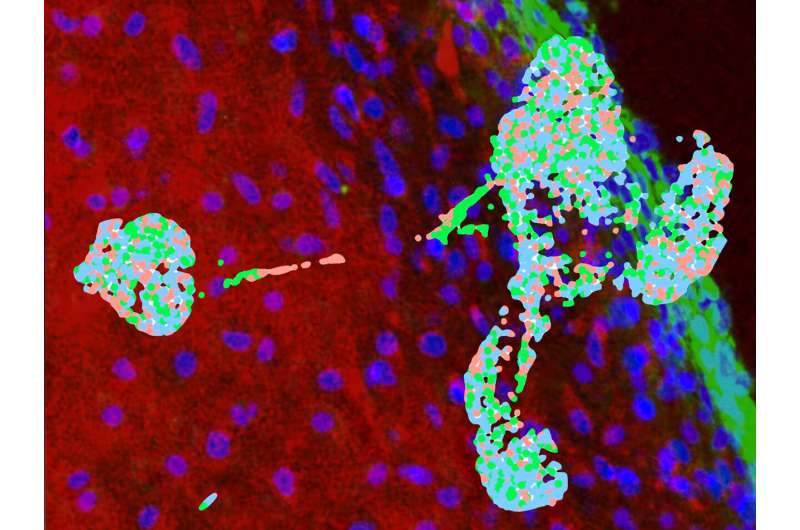This article has been reviewed according to Science X's editorial process and policies. Editors have highlighted the following attributes while ensuring the content's credibility:
fact-checked
peer-reviewed publication
trusted source
proofread
Research team discovers new way to generate human cartilage

University of Montana researchers and their partners have found a new method to generate human cartilage of the head and neck. Mark Grimes, a biology professor in UM's Division of Biological Sciences, said they have induced stem cells to become the cell type that normally makes up human craniofacial cartilage. Stem cells can replicate themselves and also develop into different types of cells.
The research is published in the journal iScience.
"The cells that normally give rise to this type of cartilage are called neural crest cells," Grimes said. "We found a novel method for generating craniofacial organoids from neural crest cells."
Organoids are a simplified, miniature version of an organ that mimic the architecture and gene expression of the organ. "Organoids are a good model for certain human tissues that we can study in ways that are not possible using tissue from human beings," Grimes said.
Grimes said there is a critical unmet need for new methods to regenerate human cartilage for the 230,000 children born annually in the U.S. with craniofacial defects. Growing cartilage in the laboratory also could lead to effective treatments to repair craniofacial cartilage damage due to injuries.
The researchers studied gene expression data at the RNA and protein level to reveal how cartilage cells arise from stem cells. They revealed that stem cells communicate in the early stages to become elastic cartilage, which makes up human ears.
To accomplish this, the team used extensive analysis of biological markers and machine-learning pattern-recognition techniques to understand the cell signaling pathways involved when cells differentiate into cartilage.
It is difficult to reconstruct natural features such as a person's ears, nose or larynx with current plastic surgery techniques, and transplanted tissue is often rejected without immunosuppressants.
"To use patient-derived stem cells to generate craniofacial cartilage in the laboratory, you need to understand the human-specific differentiation mechanisms," Grimes said. "Our aim is to develop a protocol for craniofacial cartilage generation for transplantation using human stem cells."
Besides Grimes, contributing UM authors include Lauren Foltz, Nagashree Avabhrath and Jean-Marc Lanchy. Other authors are Bradly Peterson of Missoula's Pathology Consultants of Western Montana and Tyler Levy, Anthony Possemato and Majd Ariss of Cell Signaling Technology of Danvers, Massachusetts.
More information: Lauren Foltz et al, Craniofacial Chondrogenesis in Organoids from Human Stem Cell-Derived Neural Crest Cells, iScience (2024). DOI: 10.1016/j.isci.2024.109585




















